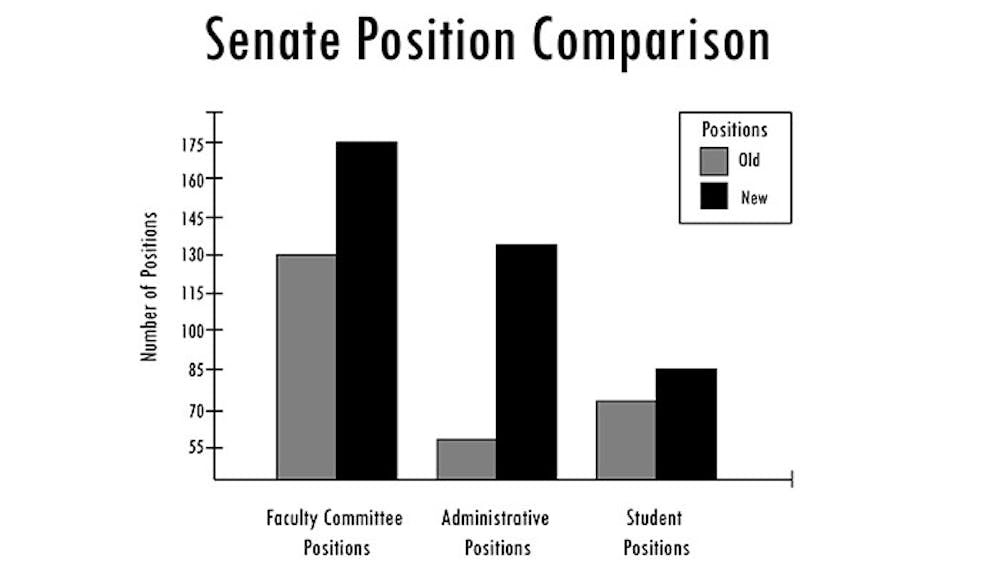The Otterbein University Senate has proposed new bylaw changes to the number of committee members, but the change-making process has been slow due to delays in voting.
According to assistant dean for Academic Affairs Susan Millsap, who chairs the governance bylaws and communication committee, the discussions on bylaw changes are still in progress.
The voting on proposed bylaws is delayed due to the last few meetings not reaching quorum.
Quorum is the minimum number of present senate members needed to conduct business and make changes to the governance of campus.
Millsap said there is usually quorum at the start of a meeting, but as discussions progress for long periods of time, the senate loses quorum with members leaving.
For normal committee meetings, there has to be at least 40 percent attendance to create votes.
However, when passing bylaws at the senate meetings, at least 51 percent attendance is required.
“One of the reasons we didn’t have quorum last time, at the special election, was because there were very few students there,” Millsap said.
“What’s worse is students run, get elected, and they don’t show up, and then they are counted in that quorum number,” she said.
Lately, Lisa Lee, administrative assistant to the president, has been sending out Google invitations to senate members requesting their response inquiring their attendance at the next senate meeting.
The purpose behind this is to have an idea of the attendance before going into the senate meeting. Since Lee has been sending out the invitations in advance, quorum can be based off of the number of people who accepted the invitation.
For example, if there are 100 senate members who accepted the Google invitation and have committed to being at the senate meeting, quorum is now based on those 100 people.
Matthew D’Oyly, assistant director of Residence Life, said that at the beginning of the year students were attending meetings and representing departments.
However, as the year has gone on, there haven’t been as many students attending meetings.
“We tried last fall to get student senators together before the senate meeting to talk about getting together and talking about the bills that were there, but there were less students there than there were at the actual senate meeting, so we just decided to not continue with that at this point,” D’Oyly said.
Mike Stumpf, the assistant director for the Center for Student Involvement, was once involved in coordinating and educating student senators about the process through student senate meetings.
“I think, hearing from students, a lot of them don’t understand the structure of the shared senate we have here,” Stumpf said. “It was a very forward-thinking and progressive idea.”
As a student who was a senator for a year, senior economics major Sneha Fernando said that students are technically well-represented in the senate, but since a lot of students don’t turn up for meetings due to scheduling conflicts, not a lot of student voices are heard during the decision-making process.
According to Millsap, the reason to change the current bylaws came with the intention of making the decision-making process clearer to all members.
Millsap said that a year and a half ago, the faculty council reported to senate some of the issues they were concerned with on campus.
One of those issues was a request that the governance system be evaluated.
The current governance structure of the senate supports nine main committees, and only five of these committees support the 23 subcommittees.
The proposed governance structure has brought down the number of main committees to a total of five. The number of subcommittees will be reduced as well.
The current structure of the senate’s committee positions has 130 faculty positions, 61 administrative positions and 71 student positions.
The new structure proposes 175 faculty positions, 133 administrative positions and 85 student positions. All committees will have subcommittees that report to them.
Millsap said that by creating this structure, the hope is that the subcommittees and the main committees will have better communication, and that the main committees will then be able to effectively report to the senate.
This will also ensure a clear recording mechanism so that people better understand where decisions are being made.








